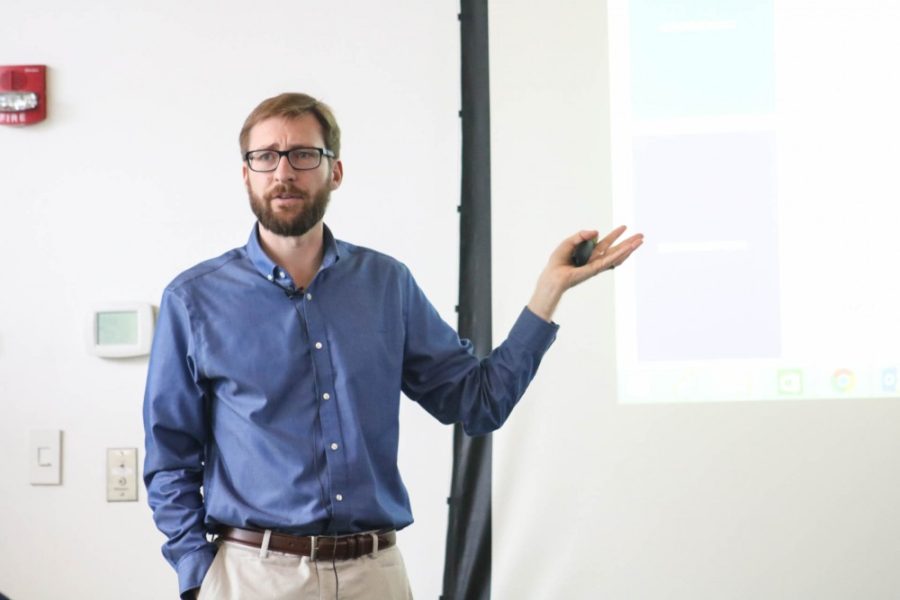The College of Architecture, Planning and Landscape Architecture began its “Sustainable Built Environments” lecture series on Friday, Jan. 12, with a lecture by Ben Champion.
Champion is the director of the University of Arizona’s Office of Sustainability.
“He directs all the activity related to sustainability, the [UA] Green Fund,” said Adriana Zuniga, the series’ organizer, which is “a major funding opportunity for projects, for students and so on.”
Champion spoke on many subjects from how sustainability is measured, to how the UA is doing in becoming more sustainable.
The UA has received accolades in it’s efforts toward being more sustainable, according to Champion, including a gold rating from the Association for Advancement of Sustainability in Higher Education in 2012 and 2013. The highest rating is platinum.
RELATED: Champion headlines spring sustainability lecture series
“We’re in pretty good company getting gold,” Champion said. “But there’s definitely another level we can get to in the rating system.”
The UA also has a strong research reputation in sustainability. The journal Science of the Total Environment did a peer-reviewed paper that studied overall environmental research from institutions, based on how often research from them was cited.
“In that paper, we were ranked the top environmental institution in the United States among universities, and number two in the world,” Champion said. “I think we were like number four in any type of organization, not just universities.”
Champion recognized the faculty and their research in different areas across the UA.
“We have a lot of faculty throughout the whole university that do a huge, wide array of environmental research; it’s all really interesting,” Champion said. “You know, a lot of focus on water, water management in the arid region that we are.”
He also noted that UA researchers tend to not research only one area of sustainability.
“We also have a strong research culture and inter-disciplinary research culture, so [we’re] crossing boundaries between disciplines,” Champion said. “We have some pretty highly ranked, national and internationally ranked graduate research programs and some undergraduate degrees.”
Champion also spoke on how students can get involved in sustainability. One way is through the UA Green Fund, which uses $400,000 in tuition money every year for student initiatives.
One year, students applied for a Green Fund grant to do composting at the UA, something that had never been done before and ended up getting funding.
“That idea — that student applying became the Wildcat Compost that’s now a self-sufficient business and its really big, and it started as an idea from a student,” Zuniga said.
Zuniga — an advocate for the Green Fund — said it shows students their ideas can come to life.
“It’s very encouraging to see that their projects can get funded, that their dreams can become a reality,” Zuniga said. “That there’s a way to do things and solve problems.”
Champion also told the audience it is hard to implement sustainability plans across the UA. He attributes this to the collaboration it takes to launch a new program.
RELATED: Office of Sustainability is thinking sustainably in UA’s next beverage contract
Asked about the hardest part of implementing sustainability programs, Champion responded with the complexity of the UA as a whole.
“The ownership of the different parts of the challenges and moving the different pieces forward is throughout the organization. There’s no master figure saying ‘you all get your act together,’” Champion said. “It’s a complex, decentralized dance that’s going on.”
Champion noted that this problem is not just present at the UA, though it is a good example of the problem.
“If you look at the challenges that the city government is facing and the county government is facing,” Champion said. “I have counterparts in offices of sustainability that are struggling with the same kind of stuff that I’m struggling with here.”
The “Sustainable Built Environments” lecture series will have four more lectures from February through April.
Follow Jordan Williams on Twitter









